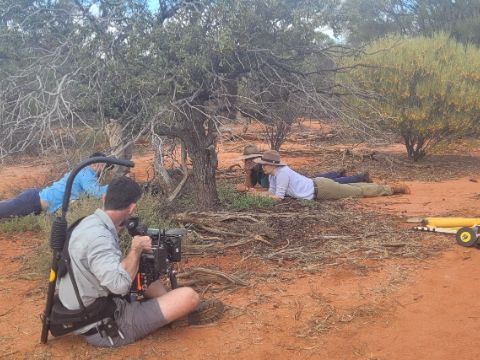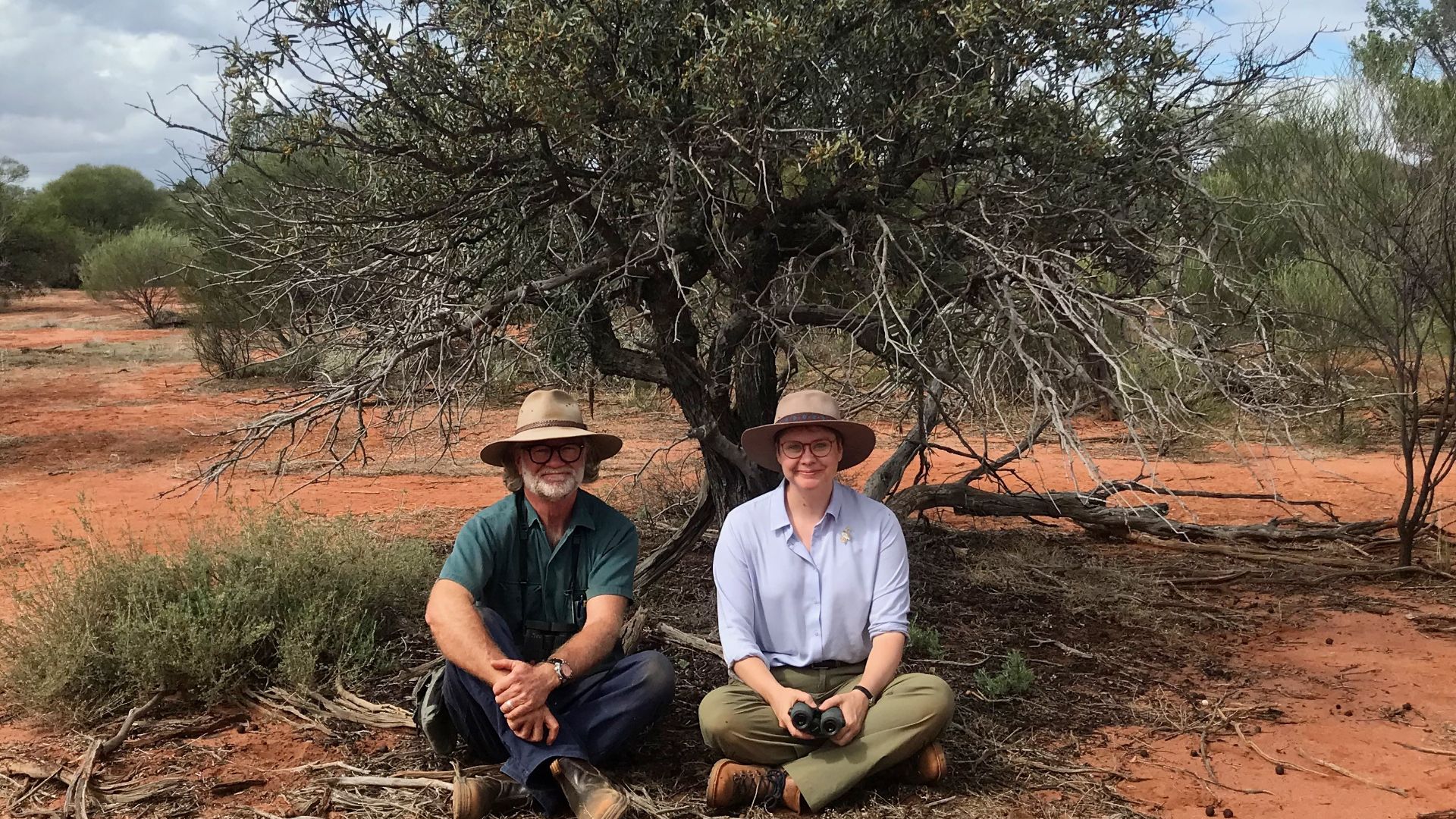- Research examined the ecological implications of sandalwood becoming extinct in the wild, and the ecological role of sandalwood trees within their natural ecosystems
- The provision of food is one of the main reasons why sandalwood can be considered a keystone resource or keystone species
- They are important keystone resources for a wide variety of animals trying to survive in Australia’s harsh outback conditions
Australian sandalwood is too important to lose. That’s the key message by Charles Sturt University PhD candidate Mr Richard McLellan (pictured, with ABC presenter Dr Ann Jones).
His research led to Australian sandalwood being selected as a finalist for ‘Australia’s Favourite Tree’ on the ABC TV Catalyst program (episode two) during this year’s National Science Week.
Mr McLellan’s previous published research has indicated that the iconic sandalwood trees are going extinct in the wild.
“It’s so much more important alive, in the bush, than dead –– cut down as it is now, and sold as timber, before being turned into perfume, or skin moisturiser, or incense sticks,” he said.
New research conducted by Mr McLellan has focussed on the ecological implications of sandalwood trees becoming extinct in the wild, and in particular the ecological roles that sandalwood trees play within their natural ecosystems.
Mr McLellan recently completed research fieldwork that involved two years of constant (24/7) remote camera trap monitoring of sandalwood communities in Australia’s western rangelands.
 “My research looked at the ecological role of sandalwood trees within their natural ecosystems, particularly focussing on which animals use sandalwood trees, and what they use them for,” Mr McLellan said.
“My research looked at the ecological role of sandalwood trees within their natural ecosystems, particularly focussing on which animals use sandalwood trees, and what they use them for,” Mr McLellan said.
The fieldwork, which generated more than two million camera trap images that required painstaking analysis, revealed 123 different species of vertebrate fauna visiting the sandalwood plant communities: 78 species of birds, 30 species of reptiles, and 15 species of mammals.
Mr McLellan said the provision of food is one of the main reasons why sandalwood can be considered a keystone species, or keystone resource for so many outback animals.
“Sandalwood tends to provide nectar and nutrient-rich fruit at times of the year when no other plants in the ecosystem are providing such rich sources of food for fauna to consume,” he said.
Mr McLellan said the majority of the animals’ visits recorded were for foraging for food, or consuming food. Other visit purposes included resting or sheltering; and ‘climate buffering’–– getting into the shade of the tree canopy to escape the region’s high summer temperatures.
“Sandalwood trees support multitrophic food webs (that is, involving species of different trophic levels of the same food chain) through providing nutrient-rich leaf litter, which attract an abundance and diversity of insects, which in turn attract insect-eating consumers such as birds and reptiles.”
Mr McLellan said his new research really emphasised just how important these ancient trees are in the sparse arid landscapes where he has been conducting his research.
“Sandalwood trees have critically important ecological roles to play within their own natural ecosystems,” he said.
“They are important keystone resources for a wide variety of animals trying to survive in very demanding conditions.
“These old trees are far more valuable in the wild and should be protected by the Western Australia and federal governments, and not over-harvested by commercial forestry operations as they are currently.”
Mr McLellan’s research by the numbers:
- 38 field trips.
- 198 days in the field (approximately 6 months).
- 28,937 kilometres travelled by road on field trips.
- 19,077 camera trap nights.
- 2,033,173 camera trap photos.
- 9,494 fauna visitation events recorded (animals visiting).
- 10,110 individual fauna visitors.
Mr McLellan, who is conducting his research in the Charles Sturt Gulbali Institute of Agriculture, Water and Environment, has been studying sandalwood for almost four years. The research has been supported by the Hermon Slade Foundation and project partner Bush Heritage Australia.
See the Australian sandalwood segment of ‘Australia’s Favourite Tree’ on ABC TV Catalyst (episode two, Tuesday 23 August).






Social
Explore the world of social